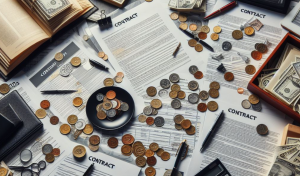3 Ways Fashion Makes Tech More Curious for Girls
![]() The fashion world is often considered a female-dominated industry, while the tech world seems most appealing to males. That view may seem sexist, but it’s the prevailing stereotype of the day. Only now, the line between the two is dissipating as fashion and technology find themselves irreversibly intertwined, bridging two distinct industries in unimaginable ways. While females are still fewer in count than male counterparts within the tech sector, the growing influence of technology in retail and fashion design could very well encourage girls to study engineering, mathematics and other fields in science.
The fashion world is often considered a female-dominated industry, while the tech world seems most appealing to males. That view may seem sexist, but it’s the prevailing stereotype of the day. Only now, the line between the two is dissipating as fashion and technology find themselves irreversibly intertwined, bridging two distinct industries in unimaginable ways. While females are still fewer in count than male counterparts within the tech sector, the growing influence of technology in retail and fashion design could very well encourage girls to study engineering, mathematics and other fields in science.
Why many girls avoid tech as a career path
According to an article published by The New York Times over the weekend, only 14 percent of physics Ph.D.’s in the US are women, earning an average salary $4,000 less than male counterparts. The disparity certainly doesn’t help the cause in making women more interested in the STEM fields – “science, technology, engineering and mathematics.”
The University of Texas-Austin and Cornell University conducted their own research and concluded that gender barriers, not a desire to start a family, play a huge role in the shortage of women in tech.
Then there’s the issue of paid maternity leave.
“If Americans would take the issue seriously they’d have paid maternity leave to assure employers don’t think twice hiring women in their fertile years who haven’t yet reproduced. If you want more women in science, that’s where you should start, not with complaints about dress code schizophrenia,” wrote Sabine Hossenfelder, an assistant professor for high energy physics at the Nordic Institute for Theoretical Physics.
Can fashion push females into tech careers?
There appears to be countless reasons why women are deterred from pursuing educational and career tracks in the sciences, but there are just as many reasons why females should be interested in the sciences. As technology finds its way into more areas of our culture, from communication to healthcare, marketing and home management, tech becomes an unavoidable aspect of daily life.
![]() A basic comprehension of tech’s underlying functions will help us all exceed, particularly women. And as technology intersects those areas in which women are already interested, the juncture could foster a new appreciation for sciences applicable in these sectors. In essence, women will become more interested in the sciences as technology becomes more personal to their interests.
A basic comprehension of tech’s underlying functions will help us all exceed, particularly women. And as technology intersects those areas in which women are already interested, the juncture could foster a new appreciation for sciences applicable in these sectors. In essence, women will become more interested in the sciences as technology becomes more personal to their interests.
One of the most promising sectors is fashion, where wearable technology and personalization can encourage any girl to go ga-ga for gadgets.
Fashion + Tech = Smart Style
Believe it or not, there’s been some very interesting developments at the intersection of fashion and technology, spurring trends that will undoubtedly go mainstream.
- Fashion Week
Fashion trends this year prepped the runway for 3D printed pieces. As part of the Iris van Herpen’s Haute Couture show, ‘VOLTAGE,’ the collaboration of Stratasys for the 3D printer and artist, architect, designer, and professor Neri Oxman from MIT’s Media Lab for the cape and skirt ensemble, and Materialise for the 3D printer and Austrian architect Julia Koerner for the intricate dress, were shown at the event.
Not only that, Burberry launched a new initiative at London Fashion Week by embedding digital chips that deliver bespoke information regarding the new season’s coats and bags. The idea is to entice consumers to pre-order items as they hit the runway.
- The Quantified, Fashionable Self
Rain Ashford has managed to take wearable tech and Quantified Self to the next level by designing trendy and cute fashion pieces.
![]() Some of her work includes the ‘You Make My <3 Flutter’ device that combines the technology of the Heart Spark with Ashford’s components, resulting in a proximity-detecting, heart rate-sensing ‘techlace;’ ‘Yr In Mah Face,’ a temperature and mood sensing shirt that uses the Celsius temperature data from a sensor, averages it, then visualizes the results via LEDs on the shirt; Baroque Barometric Skirt which has pressure, altitude, environment temperature, and temperature for the wearer sensors which displays environment and physiological data vie LEDs; and a bunch of other things that aims to change how people see the data gathered by tech gadgets.
Some of her work includes the ‘You Make My <3 Flutter’ device that combines the technology of the Heart Spark with Ashford’s components, resulting in a proximity-detecting, heart rate-sensing ‘techlace;’ ‘Yr In Mah Face,’ a temperature and mood sensing shirt that uses the Celsius temperature data from a sensor, averages it, then visualizes the results via LEDs on the shirt; Baroque Barometric Skirt which has pressure, altitude, environment temperature, and temperature for the wearer sensors which displays environment and physiological data vie LEDs; and a bunch of other things that aims to change how people see the data gathered by tech gadgets.
- Lighting up the world a step at a time
Adafruit Industries helps people with do-it-yourself projects that uses LED lights, sensors, chips, adhesive and other things you can easily get your hands on. One of its more interesting and fashionable projects is the Glowing Chuck Taylor All-Star Sneakers. All you need is Adafruit’s electro luminescent panel, an inverter, glue, and a needle and thread.
Another interesting project is the Firewalker LED Sneaker, which makes use of NeoPixel strip and FLORA, Adafruit’s wearable electronics platform. These mods to your kicks will surely light up your day. If you’re interested in more Adafruit DIY projects, check out their YouTube channel.
photo credit: Studio Roosegaarde via photopin cc
A message from John Furrier, co-founder of SiliconANGLE:
Your vote of support is important to us and it helps us keep the content FREE.
One click below supports our mission to provide free, deep, and relevant content.
Join our community on YouTube
Join the community that includes more than 15,000 #CubeAlumni experts, including Amazon.com CEO Andy Jassy, Dell Technologies founder and CEO Michael Dell, Intel CEO Pat Gelsinger, and many more luminaries and experts.
THANK YOU













